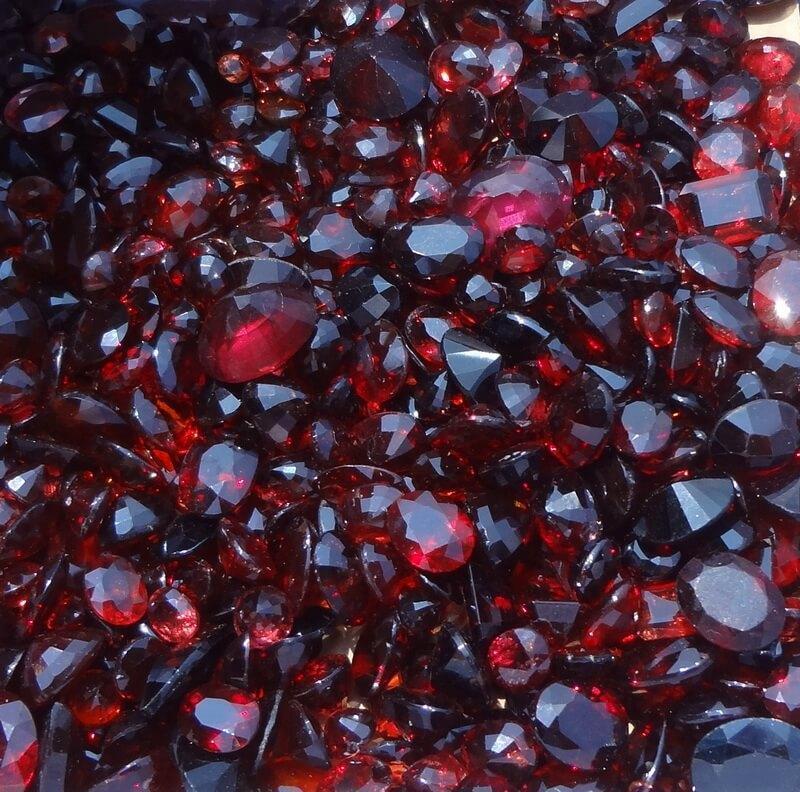
The January Birthstone: Garnet
Take one look at the deep red seeds nestled inside a pomegranate fruit to understand where the gemstone garnet takes its name. Derived from the Latin word 'granatus' - meaning 'grain' or 'seed' - the name was given to garnet because of its close resemblance to the pomegranate seeds.
First mined in Sri Lanka over 2500 years ago, garnets are now found in many countries across the world including Africa, Australia, India, Russia, South America and the United States and although most commonly red in colour, garnets can also be found in a variety of hues including lime green, rosy pink and bright yellow.
Because the chemical composition of garnet varies, the atomic bonds in some species are stronger than in others. As a result, this mineral group shows a range of hardness on the MOHs Scale of about 6.5 to 7.5. The harder species like almandine are often used for abrasive purposes.
There are 6 main types of garnet, each of which come from a different part of the globe, with their own unique properties, but the main difference between them come from variations in colour, density and refraction capacities, due to unique combinations of elements with each particular gem, such as iron, calcium and manganese.
- Almandine: A deep rich red colour with undertones of purple or orange, with the most valuable almandine garnets being a wine colour, and are found all over the world from Brazil to Kentucky.
- Demantoid: One of the most rare and valuable varieties of garnet, with medium green tones, that are found in Italy, Korean, Russia and Zaire.
- Pyrope: The most classical type of garnets when people think of the birthstone for January. The pyrope garnets found in the United States have the most feel, saturated red tones.
- Rhodolite: This African variety is also highly popular - with pink or lavender tones - the rhodolite type of garnet is especially popular for use in children's jewellery.
- Spessartite: With a medium orange to reddish orange hue, spessartite garnets are primarily found in Bavaria and Germany and are especially popular in these regions.
- Uvarovite: Found in Russia, this bright green type of garnet often occurs in small crystals.
Throughout time, there have been many ancient traditions and legends about garnet. In medieval times, the stones were thought to cure depression, protect against bad dreams and relieve diseases of the liver; According to legend, Noah used a finely cut, glowing garnet to illuminate the ark during those wet days and nights; Hebrew writers include the garnet as one of the twelve gems in Aaron's breastplate and Christian tradition considered the blood-red garnet as a symbol of Christ's sacrifice.
If you own a garnet, they can be cleaned with warm soapy water and a soft brush, but you must always make sure you rinse the gem after washing it. Ultrasonic treatments may also be used for garnet, except the demantoid variety and you should not steam clean the stone. Care should be taken to protect your gem from sharp blows, harsh temperatures and chemicals.
To discover our full range of garnet jewellery, visit us in store at our Cornfield Road or The Beacon, Eastbourne stores.
